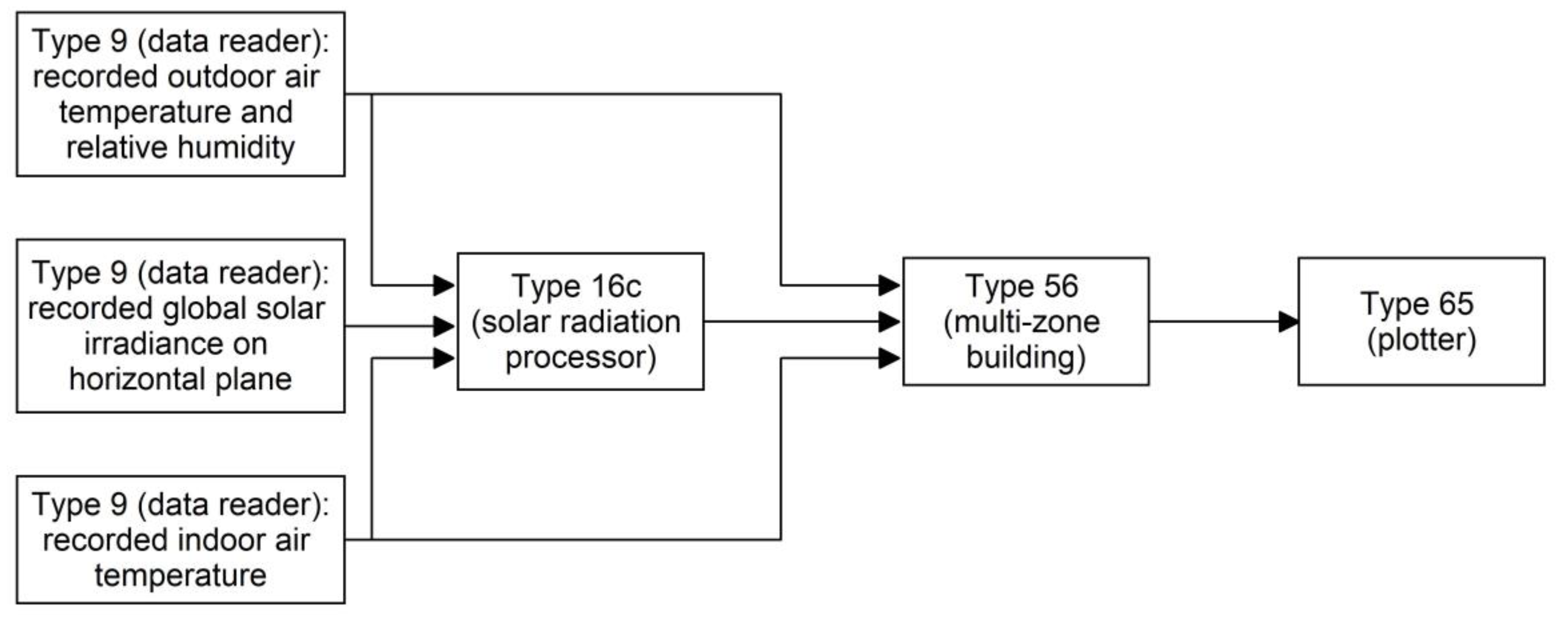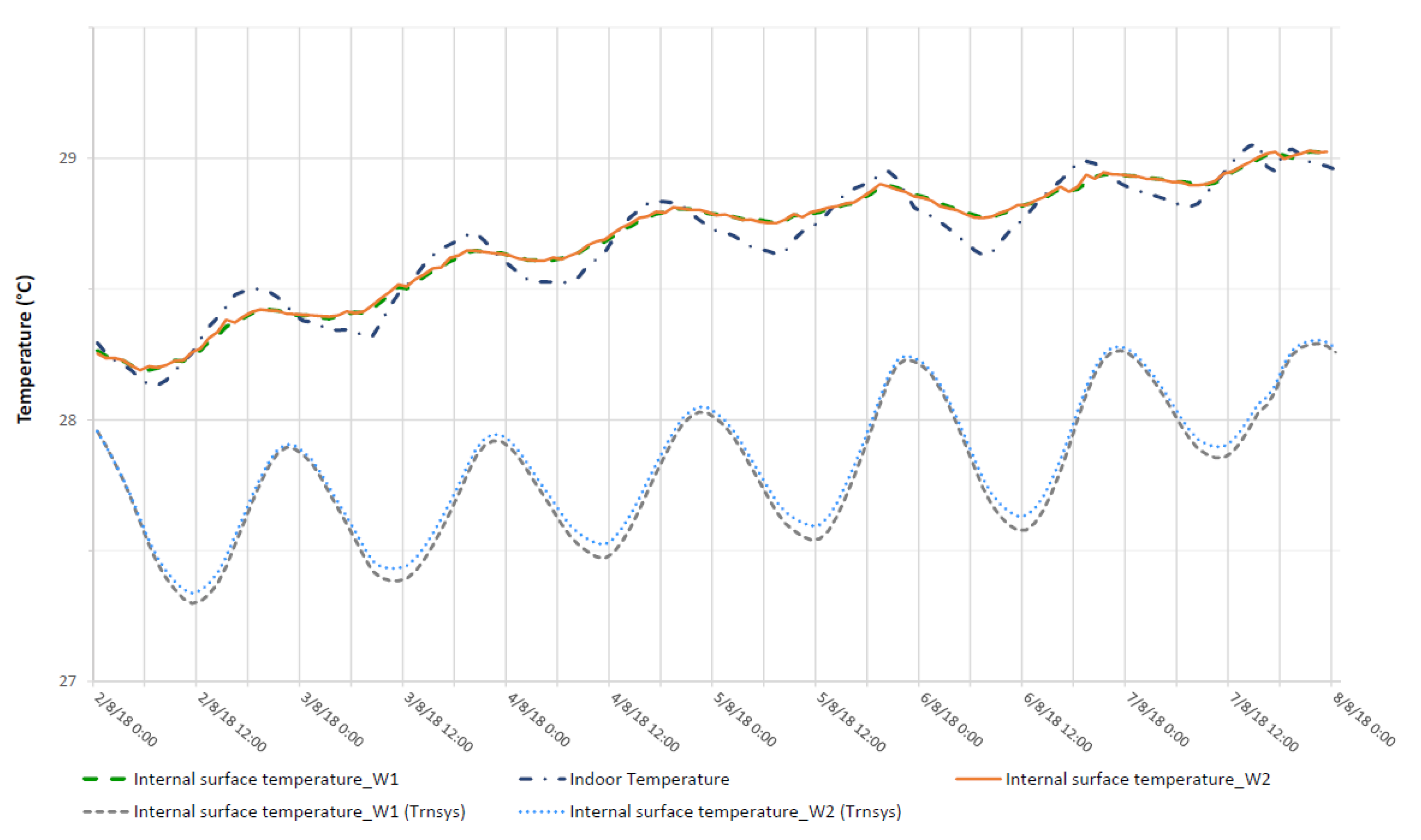

In prior versions of this model, auxiliary could change midway through a timestep. corrected equation for calculating heat transfer to the ambient added output (6) for mass balance error flag corrected error message text on FoundBadInput errors.īugfix: Type153 underwent a major rewrite starting over from generic tank model, implementing auxiliary controls with one decision per timestep (ON or OFF). Block of Type numbers newly reserved for French community TRNSYS components.Įnhancement: Revisions to A4_trnViewBUI.pdfĮnhancement: Revisions to the trnViewBUI installer.īugfix: Type69.f90 – deleted unused variables in source code.īugfix: TrnsysFunctions.f90 – deleted blank lines in the ShowMessage() function.īugfix: 301 (complex fenestration model) – wrong area was used (module area of window type instead of surface area).īugfix: Type38 – the auxiliary heat would never turn on.īugfix: Type 110.

#TRNSYS MODELE 576 CODE#
Documentation corresponds to code modifications made in v.Įnhancement: Revisions to the 07-ProgrammersGuide manual. Removal of Mathis.Įnhancement: Revisions to the Type153 and 154 sections of the 04-MathematicalReference manual.
#TRNSYS MODELE 576 SOFTWARE#
Models are constructed in such a way that users can modify existing components or write their own, extending the capabilities of the environment.Īfter 35 years of commercial availability, TRNSYS continues to be a flexible, component-based software package that accommodates the ever-changing needs of researchers and practitioners in the energy simulation community.Įnhancement: Revisions to the 02-SimulationStudio manual. The standard library includes approximately 150 models ranging from pumps to multi-zone buildings, wind turbines to electrolyzers, weather data processors to economics routines, and basic HVAC equipment to cutting edge emerging technologies. The second part of TRNSYS is an extensive library of components, each of which models the performance of one part of the system. The kernel also provides utilities that, among other things, determine thermophysical properties, invert matrices, perform linear regressions and interpolate external data files. The first is an engine (called the kernel) that reads and processes the input file, iteratively solves the system, determines convergence and plots system variables. Prerequisite(s): Background in fluid mechanics, thermodynamics, and compressible flow or permission of instructor.TRNSYS is made up of two parts. The equilibrium topics include kinetic theory and concepts related to microscopic, molecular collisions, macroscopic chemical thermodynamics, the law of mass action, internal molecular structure and quantum energy states, general statistical mechanics applied to the prediction of thermodynamic properties of monatomic and diatomic gases, chemically reacting mixtures, and the dissociation and ionization of gases. The course assumes material media in local equilibrium in the gaseous state but some non-equilibrium behavior will also be considered. Emphasis is placed on the application of these molecular theories for analyzing thermodynamic and transport phenomena, as they pertain to the modeling of 'real gas effects' in high temperature flows. Physical Gas Dynamics: The basic elements of kinetic theory, chemical thermodynamics, and statistical mechanics. Physical Gas Dynamics with Aerospace Applications.
#TRNSYS MODELE 576 SERIES#
Ultimately, students scaffold their knowledge through a series of microprocessor programming modules which culminate in student teams designing, fabricating, and programming autonomous robotic vehicles for a class-wide competition. Related to its Integrative component within CAP, students discuss and reflect on the social impact such technology has within their lives, their future profession, and the world as a whole. In addition to these fundamentals, the “mechatronics emphasis” involves practical experience in creating robotic and automated systems.

Students are introduced to DC, AC, and transient circuit analyses.

Topics include principles of linear circuit analysis and problem solving techniques (both analytical and computer solutions) associated with analog circuits containing both passive and active components. This course provides an introduction to the cross-disciplinary topic of Mechatronics, a blend of Mechanical, Electrical, and Computer Engineering.


 0 kommentar(er)
0 kommentar(er)
